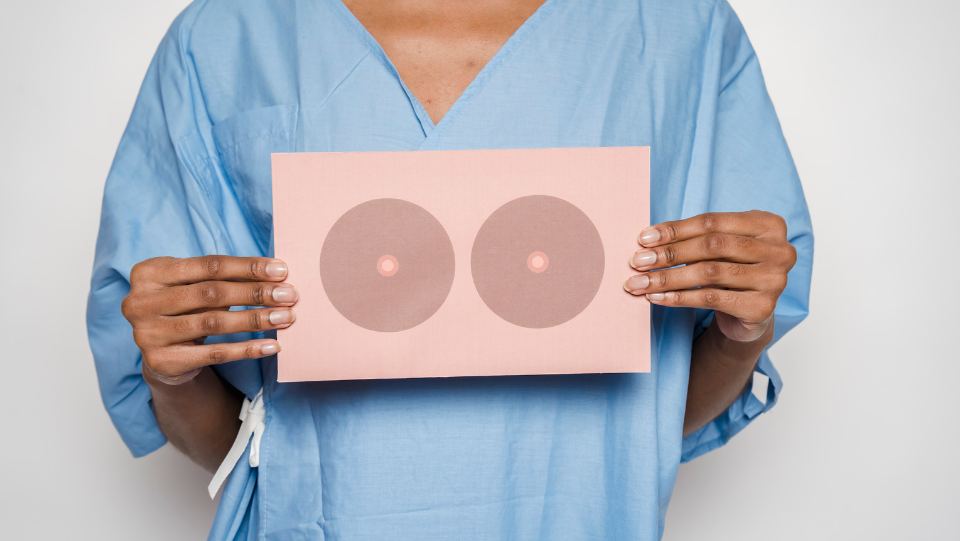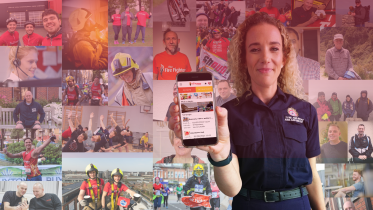Breast cancer is the most common type of cancer in the UK, so knowing the signs and symptoms to watch out for is really important for early diagnosis.
About 1 in 7 women are diagnosed in their lifetime, with most aged over 50, while around 370 men are diagnosed with the disease each year in the UK too. But, if it is detected early enough, there’s a good chance of recovery.
Now, as October is Breast Cancer Awareness Month, it’s a perfect opportunity to raise awareness of breast cancer and the importance of self-examination.
Below, our Nursing Services Lead, Kath Savage, alongside our nursing team reveal some of the main signs and symptoms of breast cancer in women and men.
What causes breast cancer in women?
The exact causes are not fully understood, however there are some risk factors which are known to increase your chances.
- Age – the older you get the more the risk
- Family history
- Previous diagnosis of breast cancer
- Previous non-cancerous breast lump
- Being overweight or obese
- Alcohol
What causes breast cancer in men?
- Most men who get breast cancer are aged over 60, although younger men are affected
- There is evidence to suggest that men with high oestrogen levels are at increased risk (all men produce a small amount of oestrogen). Factors which may increase oestrogen include, liver damage/cirrhosis, Klinefelter syndrome and obesity
- Men who have had previous radiation to the chest, for example, Non-Hodgkin’s lymphoma
- A small number of men have a significant family history
- It’s not certain that you can do anything to reduce your risk, but eating a balanced diet, losing weight if you’re overweight and not drinking too much alcohol may help
How to check
Almost half the women in the UK don’t check their breasts regularly. It is vital to know what is normal for you and to check as often as possible. You do not need special training to check your breast, if you remember ‘TLC’:
- Touch your breast: can you feel anything unusual or different to normal (new)?
- Look for changes: does anything look different?
- Check any new or unusual changes with your GP
Maybe set a monthly reminder on your phone. Meanwhile, it’s also important for men to keep an eye on any changes in their body. Both men and women need to watch out for any of the symptoms below:
What are the symptoms?
- A lump or area of thickened tissue. Most of these lumps are not cancerous but it is vital to get them checked out
- A change in size or shape of one or both breasts (potentially some swelling)
- Discharge from either nipple, which is blood stained
- Lump or swelling in your armpit
- Dimpling on the skin of your breasts
- Change in appearance to your nipple
- A rash on or around the nipple
- For men, a nipple that is pulled into the breast (called nipple retraction)
- A sore (ulcer) in the skin of the breast
Pain in the breast is not usually a sign of breast cancer but should be checked out.
What next?
Your doctor or nurse will feel your breasts and your lymph nodes in your armpits. You may need further tests. These may include:
- Mammogram (an x ray of the breast tissue)
- An ultrasound scan
- A biopsy of the breast tissue and sometimes the lymph nodes, to take tissue samples
- A fine needle biopsy of the breast tissue and sometimes the lymph nodes, to take samples of cells
If something is affecting your physical or mental health, let us help. Call our Support Line on 0800 389 8820 or make an enquiry online.
Try our online courses
Find Out More
Our Find Out More – Physical Health and Find Our More – Healthy Eating courses have more information on staying healthy and happy, plus some small changes you can make in your everyday life.
Please let us know if you found this article helpful, or if there’s anything you’d like us to have focused on more in the feedback section below.
Published: October 2021
Updated: October 2023.




